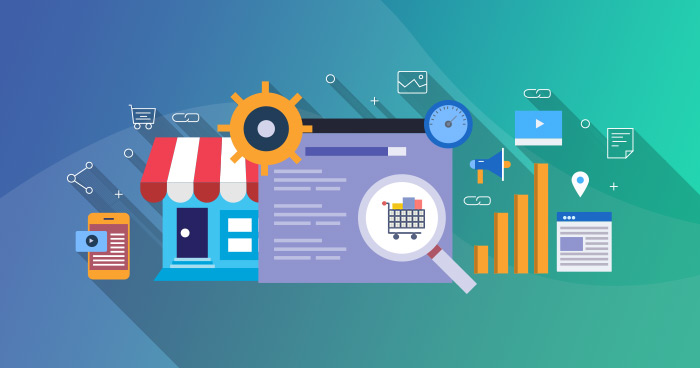Elevate Your Online Presence:
In the ever-evolving landscape of digital marketing, staying ahead of the competition requires more than just a basic understanding of the tools and strategies available. It necessitates a meticulous approach to optimization, ensuring every aspect of your digital marketing efforts works harmoniously to drive maximum results. This comprehensive guide explores essential tips and techniques for optimizing your digital marketing strategy.
1. Understanding Your Audience

Identifying Target Demographics:
Before diving into specific tactics, it’s crucial to know who your audience is. Create detailed buyer personas that encompass demographics, interests, pain points, and online behavior. Utilize tools like Google Analytics, social media insights, and customer surveys to gather this information.
Analyzing Customer Behavior:
Use analytics tools to track and analyze how your audience interacts with your content and website. Look for patterns in behavior that can inform your strategy, such as which pages are most visited, the average time spent on site, and the paths users take to conversion.
2. Optimizing Your Website for User Experience

Ensuring Mobile Friendliness:
With mobile devices accounting for a significant portion of web traffic, ensuring your website is mobile-friendly is non-negotiable. Implement responsive design, optimize images and other media for quick loading, and streamline navigation for mobile users.
Improving Page Load Speed:
Slow-loading websites can significantly hinder user experience and negatively impact search engine rankings. Use tools like Google PageSpeed Insights to identify and rectify speed issues. Compress images, leverage browser caching, and minimize JavaScript to boost load times.
Streamlining Navigation:
An intuitive and easy-to-navigate website enhances user experience and encourages longer visits. Ensure your navigation menu is clear and logically organized, and consider using breadcrumb trails to help users understand their location within your site.
3. Leveraging SEO Best Practices

Conducting Keyword Research:
Effective SEO starts with thorough keyword research. Utilize tools like Ahrefs, SEMrush, or Google Keyword Planner to identify relevant keywords with high search volume and low competition. Incorporate these keywords naturally into your content, meta tags, and headers.
Creating High-Quality Content:
Content is king in the realm of digital marketing. Focus on creating valuable, informative, and engaging content that addresses your audience’s needs and questions. Regularly update your blog with fresh content, and consider diversifying your content formats, including videos, infographics, and podcasts.
Building Quality Backlinks:
Backlinks from reputable websites can significantly boost your search engine rankings. Develop a strategy for acquiring high-quality backlinks through guest blogging, partnerships, and creating shareable content that naturally attracts links.
4. Enhancing Social Media Engagement
Choosing the Right Platforms
Not all social media platforms are created equal, and your choice should be guided by where your audience spends their time. Analyze platform demographics and align your efforts with those that best fit your target audience, whether it’s Facebook, Instagram, LinkedIn, or TikTok.
Crafting Engaging Content
Create content tailored to each platform’s unique audience and format. Use a mix of promotional posts, engaging visuals, interactive content like polls and quizzes, and user-generated content to keep your audience engaged and coming back for more.
Utilizing Social Media Advertising
Organic reach on social media is limited, making paid advertising a crucial component of your strategy. Utilize the advanced targeting options available on platforms like Facebook and Instagram to reach specific demographics, interests, and behaviors. Regularly monitor and adjust your ad campaigns based on performance metrics.
5. Implementing Email Marketing Campaigns

Building a Quality Email List:
Your email marketing success hinges on the quality of your email list. Use ethical methods to grow your list, such as offering valuable content in exchange for email addresses, using sign-up forms on your website, and hosting webinars or events.
Personalizing Email Content:
Personalization can significantly boost engagement rates. Use subscriber data to tailor your emails, addressing recipients by name and sending content relevant to their interests and behavior. Automated email sequences can help nurture leads and guide them through the sales funnel.
A/B Testing and Analyzing Results:
Continuously optimize your email campaigns through A/B testing. Experiment with different subject lines, email designs, and call-to-actions to determine what resonates best with your audience. Use email marketing analytics to track open rates, click-through rates, and conversions to refine your strategy.
6. Utilizing Pay-Per-Click (PPC) Advertising

Crafting Effective Ad Copy:
Compelling ad copy is crucial for attracting clicks and conversions. Focus on creating concise, benefit-driven messages that clearly communicate your value proposition. Use strong calls-to-action to encourage immediate responses.
Targeting the Right Audience:
PPC advertising allows for precise audience targeting. Define your target audience based on demographics, interests, and online behavior. Use remarketing to reach users who have previously interacted with your website or ads, increasing the likelihood of conversion.
Monitoring and Adjusting Campaigns:
Regularly review your PPC campaign performance metrics, such as click-through rates, cost-per-click, and conversion rates. Use these insights to optimize your ad copy, targeting, and bidding strategies. Continuous monitoring and tweaking are essential for maximizing ROI.
7. Analyzing and Refining Your Strategy

Setting Clear Objectives and KPIs:
Define clear, measurable objectives for your digital marketing efforts. Whether it’s increasing website traffic, generating leads, or boosting sales, setting specific goals will help guide your strategy and measure success.
Using Analytics Tools:
Leverage analytics tools like Google Analytics, SEMrush, and social media insights to track your performance. Regularly review these metrics to understand what’s working and what’s not, and adjust your strategy accordingly.
Continuous Improvement:
Digital marketing is not a set-and-forget endeavor. Stay updated with industry trends, experiment with new tactics, and continuously refine your strategy based on data and feedback. Regularly audit your digital marketing efforts to identify areas for improvement and ensure you’re always moving towards your goals.
Conclusion:
Optimizing your digital marketing strategy requires a multifaceted approach, combining audience insights, technical optimizations, creative content, and continuous analysis. By implementing these tips, you can enhance your online presence, engage your audience more effectively, and ultimately drive better results for your business. Stay committed to learning and adapting, and your digital marketing efforts will yield substantial returns.


